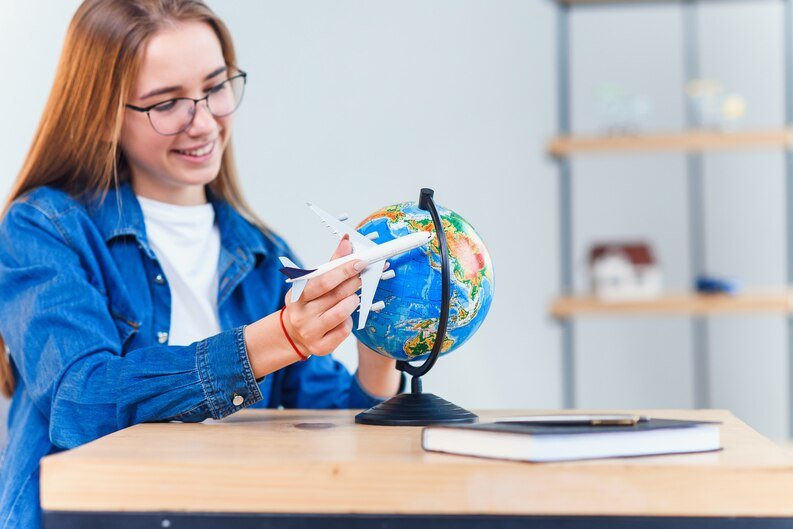


5 Methods To Your Study Abroad Experience
Certainly, let’s delve into more detailed information on the “5 Methods To Record And Preserve Your Study Abroad Experience.”
1. Keeping a Digital Journal
Keeping a digital journal is a versatile and efficient way to record your study abroad experience. Here’s how to do it effectively:
- Select a Journaling Platform: Start by choosing a digital journaling platform or app that suits your preferences. Popular options include Evernote, Day One, or even a simple Google Docs file.
- Daily Reflections: Make it a habit to jot down your daily experiences, thoughts, and emotions. Write about your classes, interactions with locals, and any cultural observations.
- Attach Multimedia: Enhance your entries by adding multimedia elements. Insert photos, videos, voice recordings, or even sketches to create a multimedia diary.
- Organization: Use tags or categories to organize your entries. This will help you easily access specific memories later.
- Privacy Settings: Consider the privacy of your journal. Some apps allow you to lock or password-protect your entries for added security.
- Regular Updates: Consistency is key. Aim to make regular updates to your digital journal to ensure you capture all the nuances of your study abroad journey.
2. Creating a Visual Diary
A visual diary adds a vivid dimension to your study abroad experience. Here’s how to create and maintain one:
- Invest in a Camera: Choose a camera that suits your budget and photography skills. Options range from DSLRs to mirrorless cameras, or you can simply use a high-quality smartphone camera.
- Capture Moments: Whenever you explore new places, take pictures that encapsulate the essence of the moment. Don’t just focus on landmarks; capture the local culture, food, and everyday life.
- Create Albums: Organize your photos into albums based on locations or themes. Label them appropriately to easily find specific memories.
- Editing Tools: Familiarize yourself with basic photo editing tools to enhance your pictures. Adjust brightness, contrast, and colors to make your photos more captivating.
- Share on Social Media: If you’re comfortable, share your visual diary on social media platforms like Instagram or Facebook. This allows friends and family to follow your journey.
- Print Memories: Consider printing some of your favorite photos to create a physical photo album or hang them as wall art. Tangible prints can evoke nostalgia.
3. Collecting Memorabilia
Collecting memorabilia helps you create a tactile connection to your study abroad experiences. Here’s how to get started:
- Keep Everything: From ticket stubs to restaurant menus and local newspapers, save everything that represents your time abroad.
- Create a Scrapbook: Purchase a scrapbook and arrange your memorabilia creatively. Include captions or short descriptions to provide context.
- Shadow Boxes: For 3D items like seashells or trinkets, consider creating shadow boxes. Arrange the items in a box frame and hang it on your wall.
- Label and Date: Ensure that each item is labeled and dated. This makes it easier to reminisce about specific events or moments.
- Digital Scans: To preserve fragile items, consider scanning them into your digital archive. This way, even physical items won’t deteriorate over time.
- Expand Over Time: Continue collecting memorabilia throughout your study abroad journey. As your collection grows, so will your memories.
4. Blogging About Your Adventures
Blogging allows you to share your study abroad experiences with a wider audience. Here’s how to start your own travel blog:
- Choose a Blogging Platform: Select a user-friendly platform such as WordPress, Blogger, or Medium to create your blog.
- Select a Niche: Determine your blog’s focus. Will it be about travel tips, cultural insights, or personal stories? Finding a niche can help attract specific readers.
- Quality Content: Write engaging and informative content. Share your experiences, provide practical advice, and add a personal touch to your storytelling.
- Engage with Readers: Respond to comments and engage with your readers on social media. Building a community around your blog can be rewarding.
- Regular Updates: Consistency is key in blogging. Aim to post regularly to keep your audience interested.
- Promote Your Blog: Share your blog posts on social media, travel forums, and with friends and family. Promoting your blog can help it reach a broader audience.
5. Networking and Making Lifelong Friends
Your study abroad experience isn’t just about places; it’s about people. Here’s how to form lasting friendships and enrich your journey:
- Join Student Groups: Most universities abroad have international student associations or clubs. Joining these groups is a great way to meet fellow students.
- Attend Cultural Events: Immerse yourself in local culture by attending cultural festivals, art exhibitions, or sports events. These are excellent places to meet locals.
- Language Exchange: If you’re in a non-English-speaking country, consider language exchange programs. You can teach English in exchange for learning the local language.
- Social Media: Use social media platforms to connect with locals and fellow students before arriving. This can make the transition smoother.
- Host Dinners or Gatherings: Organize gatherings or dinners to bring people together. Sharing meals and stories can forge strong bonds.
- Stay in Touch: After returning home, make an effort to stay in touch with the friends you’ve made. Visiting them in their home countries can be a fantastic way to reconnect.
By following these methods, you can ensure that your study abroad experience is not only well-documented but also deeply cherished for years to come. Embrace the adventure, embrace the people, and savor every moment of your time abroad.



